Speak To Our St Helena Specialist Today
and start planning your tailor-made holiday

Ben
Travel Expert
What not to miss on this remote Atlantic island, from Napoleon to whale sharks
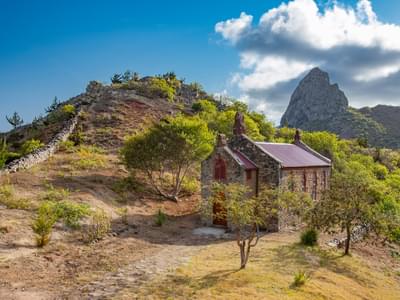
A visit to St Helena is all about exploring the past, enjoying the great outdoors and meeting the wildlife. You might be stuck out on a remote island in the middle of the Atlantic Ocean, but there's plenty to do here so you'll easily fill a week. The best way to get around is either by hiring a car, or taking a tour, both of which are readily available on the island. With a 4WD tour you'll be able to reach areas of the island inaccessible to a standard hire car, so it's worth considering this option if you want to get even more off the beaten track.
There are several fun and unusual things to do on St Helena island, and here are our favourites...
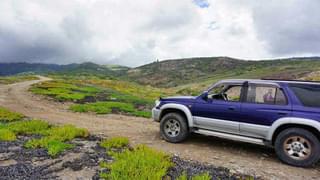
Napoleon Bonaparte was once St Helena's most famous resident, and despite having been dead for nearly 200 years, it seems he still is. He was exiled here in 1815 after being defeated at the Battle of Waterloo, and spent his final years living at Longwood House, where he died in 1821 (either from stomach cancer, or poisoning from arsenic-laced wallpaper, depending on who you believe!). Longwood House was previously a storage barn, and a summer residence for the Governor, before being converted for use by Napoleon. After his death, the house was rented to a farmer who used it to store machinery and animals (Napoleon's bedroom had become a stable!). In 1858 Longwood was sold to the French who have restored the property and continue to own it today. You can visit the museum and tour the house.
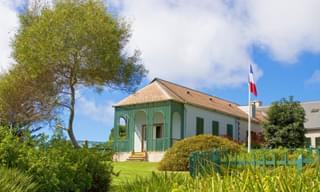
Don't forget to stop at the site of Napoleon's Tomb in the nearby Sane Valley. He was initially buried here for 19 years before being allowed a final resting place back in Paris. The tomb remained nameless since the British authorities and Napoleon's representatives couldn't agree on what to write! Today it's a very peaceful spot to contemplate life, and try and imagine Napoleon himself walking here, seeing the same things you are.
You can also visit Briar's Pavilion, where Napoleon spent the first two months of his exile after arriving on the island, whilst Longwood was being made ready.
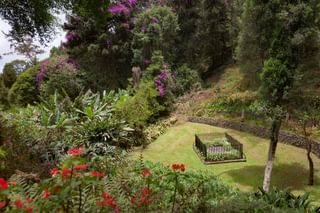
Dolphins and whales are a common sight around St Helena and can often be spotted from land, between June and December. Pantropical spotted dolphins as well as bottlenose dolphins sometimes appear in huge pods several hundred strong, which is quite a sight! To get a better view, take a boat trip and see them a lot closer. St Helena is also one of the best places in the world to see whale sharks, and it's even possible to snorkel with them between January and March. Keep an eye out for turtles and rays too, as well as plenty of endemic marine life that enjoys the waters around St Helena.
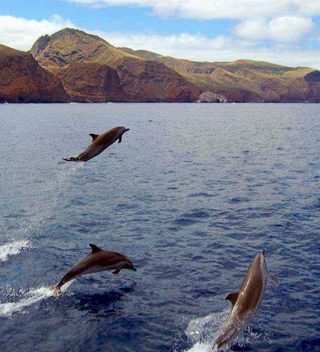
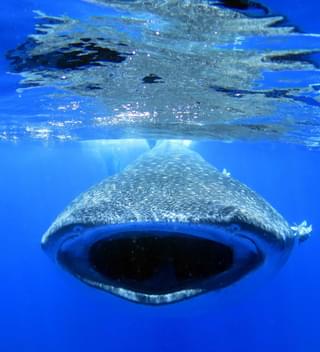
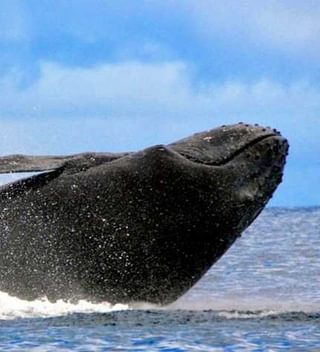
The waters around St Helena are clear, warm and teeming with colourful marine life, and there are numerous reefs, caves and 8 wrecks to explore. Diving here is amongst the best in the world, and there's something for everyone, whether you're a beginner or an expert. It can be enjoyed all year round but the best time for visibility is between December and May, which coincides with the peak season for whale shark sightings.
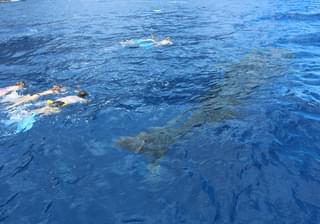
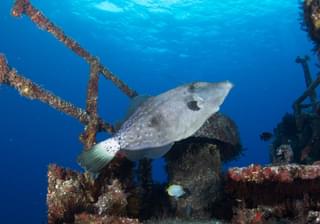
One of the most popular things to do on St Helena is visit Plantation House, home of the Governor of St Helena, as well as a rather famous tortoise. Tours of the house and grounds take place on Tuesdays and Thursdays at 11am, and it's fascinating to see what life was like here in times gone by. Apparently the chandelier in the dining room was originally used by Napoleon at Longwood House and was brought here to Plantation House after his death.
The grounds are interesting to explore too, and there are several walks to try ranging from 1km to 3km. Keep your eyes out for the 'Ladies' Bath' (a natural spring) which was constructed by the East India Company for use by ladies staying at the house, as well as the aptly named 'Big Rock Viewpoint'. There are also a couple of graves belonging to a butcher and his wife (you can tell by the meat cleaver on the headstone). If local lore is to be believed, the butcher killed his wife, and now the grave site is of course haunted. Many locals think that the house itself is haunted too and don't like visiting at night.
And then there's Jonathan, who at around 187 years old, is the oldest inhabitant on the island, and could even be the oldest living land animal in the world. You can see him and his pals trundling around the grounds, and take your photos from the specially designed viewing area. Read more about Jonathan here.
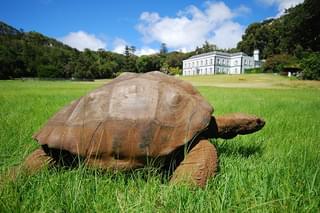
The name 'Sandy Bay' is a bit misleading. It is indeed a bay, but don't expect a nice sandy beach. The landscape is dramatic and the shore is rocky, but people often come here for a picnic and to explore the remains of fortifications that were constructed to ward off any attempts to rescue Napoleon. Keep an eye out for rusting canons, and St Helena's lime kiln!
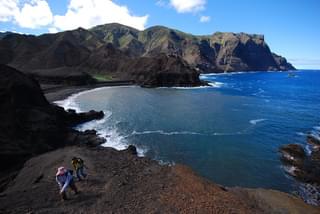
St Helena's history is about so much more than just Napoleon. One site of significance is High Knoll Fort, which was built in case of an invasion. The original citadel dates from 1798, although the present fort was constructed in 1874. Perhaps the best part about a visit to the fort is the views.
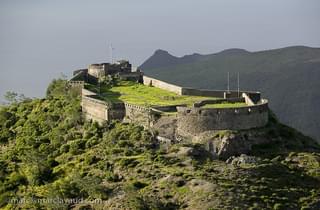
Hiking on St Helena is fabulous, and there are a lot of trails all over the island to choose from, taking in an incredible variety of terrain, from eucalyptus forests and acacia woodlands, to sea cliffs and ancient deserts. It's really the best way to explore. Some routes are rugged, steep and difficult whilst rewarding those who accept the challenge with dramatic scenery and stunning views. Other paths are less arduous but equally enjoyable, taking you through gentle countryside and along green valleys.
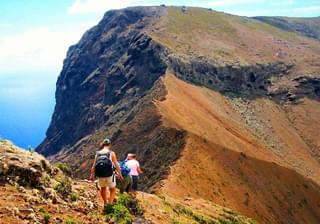
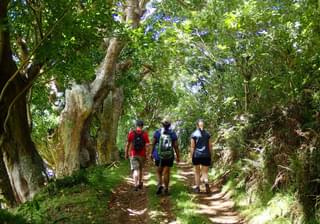
Particularly worthy of a mention is Diana's Peak National Park, which is famous for its exotic plants, the endemic 'blushing' snail, and some of the best views on the island. The peak itself is the highest point on St Helena at 823 metres, and from here you can see for miles.
You can buy route maps from the post office in Jamestown.

Similar to 'letterboxing' in the UK, St Helena has 21 'Post Box Walks' where hikers visit certain points along island trails and collect stamps as souvenirs, whilst also leaving an entry in the log books. The paths take in some of the most remote and untouched scenery on the island so it's a fun way to explore. Each trail has a difficulty rating from 1-10 so do a bit of research first to ensure you choose the right one for you. Some of them are quite challenging, and it's recommended that you hire a guide for any trail ranked level 5 or above.
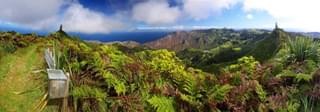
There's plenty to do in Jamestown, which is likely to be where you'll be staying, for at least part of your St Helena holiday. Check out St Paul's Cathedral, which was built in 1851, and the adjoining graveyard which is the final resting place of numerous Governors, Bishops and military members from the last few hundred years. Take a stroll around Castle Gardens near the centre of town. They once belonged to the East India Company, and today are home to colourful endemic plants and flowers, as well as a fish pond. It's a tranquil and relaxing place to have a picnic and a break from all the sightseeing. The castle itself is the seat of the Government on St Helena, and doesn't really look much like a castle. It's open to the public during the day, but you can only venture as far as the foyer (unless you happen to be an important visiting dignitary).
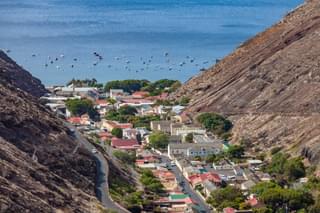
The museum of St Helena is well worth a visit to help you understand more about the history of St Helena and its inhabitants, and has exhibitions on local crafts, maritime history and the role the East India Company played on the island. The building itself is interesting, and dates back to the 18th century. Apparently the first ever exhibits included a sea serpent and a flying lizard! You'll find the museum at the bottom of Jacob's Ladder so it makes sense to combine the two.
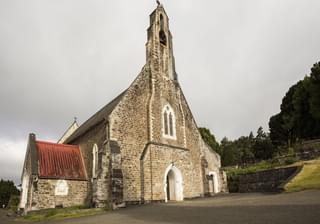
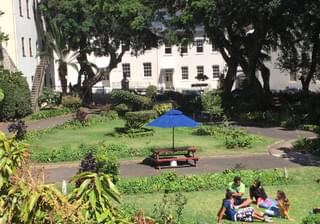
One of the best things to do in Jamestown is climb the almost vertical 699 steps up Jacob's Ladder for superb views of the lower town and sea beyond. The incline was built in 1829 as a way of hauling manure up from the town, and to send goods back down. Today it's top of the list for many tourists visiting St Helena, and you can even buy a souvenir certificate from the museum shop as a memento!
It's not a good idea for those who suffer from vertigo, but don't worry, you can drive up in half the time and enjoy the same views without working up a sweat! If you have braved the climb, it's best to ask someone to pick you up at the top so you don't have to walk down again.
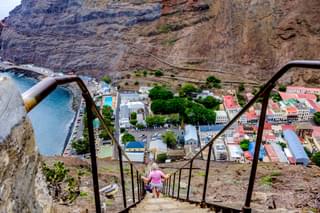
Fancy visiting the most remote distillery in the world? It's right here on St Helena in Jamestown, and produces the famous Tungi Prickly Pear Spirit, as well as White Lion Rum, Juniper Gin and the gloriously-named Midnight Mist Coffee Liqueur. Tours and tastings cost £5 per person.
The famous Astronomer Edmund Halley (of comet fame!) visited St Helena in 1673 to study the celestial skies of the southern hemisphere. The location of his observatory offers superb views over the south-eastern side of St Helena, including of Longwood, and there's a sheltered area to star gaze in some of the least light-polluted skies you'll ever come across.
If you're into waterfalls, then make sure you visit the heart-shaped cascade at the end of James Valley, a short walk from Jamestown. You can access it along a hiking trail that starts at Drummond's Point and meanders through wild mango and island scrubland to the base of the falls. There's a boardwalk leading to the viewing platform by the plunge pool. Just bear in mind that the waterfall flows during winter and spring (April - October), and is often dry during the summer (November - March).
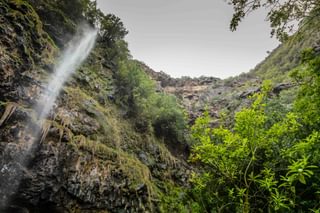
Not far from Longwood House, there's a 9 hole golf course (you go round twice!), where you can put your skills to the test and enjoy a bit of banter with the other players. The course isn't exactly up to international standards, with volcanic earth, public roads and grazing goats to content with, but that just makes it all the more fun! The course is open to anyone and you can borrow clubs there rather than bringing your own.
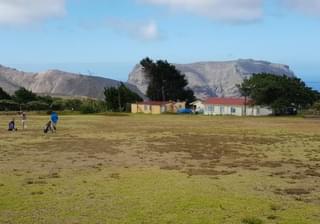
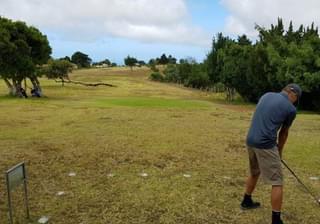
Deadwood Plain is the site of a Boer prisoner of war camp and cemetery, and an important part of the island's history. 6,000 prisoners from the Second Boer War were held here, with most living in tents with trees planted between them to act as wind shields (you can still see some of these trees today). This is also a good place for spotting the wirebird, the only endemic bird left on St Helena.
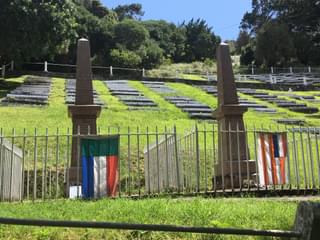
There are many unique species on St Helena, including the endemic ground-nesting wirebird (known for its thin, wiry legs) which has become the unofficial national bird of the island, featuring on its flag and coat of arms. Most typically wirebirds are found on Prosperous Bay Plain, Deadwood Plain and Broad Bottom.
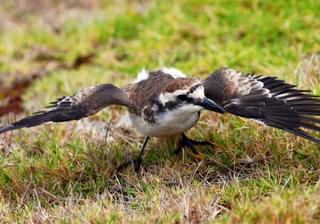
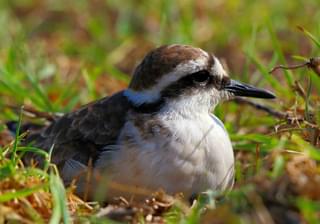
Wondering when to visit? Take a look at this guide on the best time to visit St Helena.
Looking for some more inspiration? Take a look at our best safari holidays ideas, our favourite family safaris, our big five safari guide or our top African safari honeymoon suggestions.
and start planning your tailor-made holiday

Travel Expert